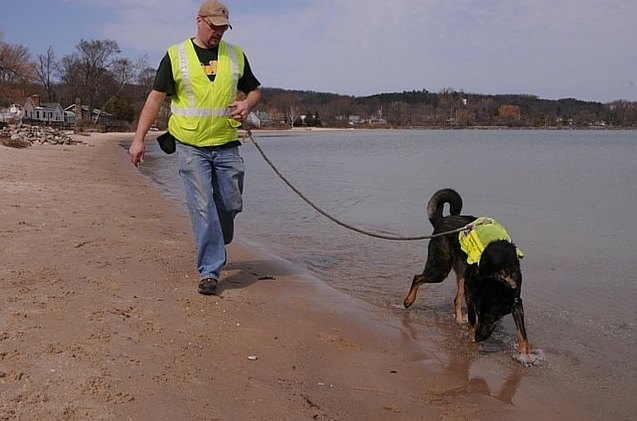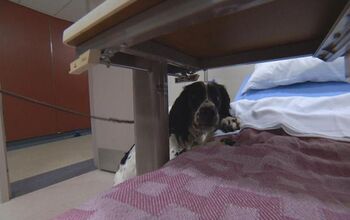Trained Dogs Sniff for Human Waste Carrying Harmful Bacteria in Water

Everybody’s heard of the wet dog smell, but happens when dogs smell something wet? Recently, dogs from Environmental Canine Services have been used to test water quality in the streams and major tributaries in American Counties. More specifically, the dogs are trained to smell and detect traces of human excrement that may be lurking in the public water supplies. Yuck! If the water smells like “eau de toilette,” the dogs let their handlers know so the samples can be taken to laboratories for further testing. Though humans may cringe at the idea of stinky water, dogs have no problems sticking their noses in less pleasant areas.
This method of water quality inspection is much faster than traditional laboratory testing as a dog can give an immediate positive or negative response on the scene after being exposed to a water sample. This system bypasses expensive water sampling techniques, saving taxpayers money. Dogs have an extremely keen sense of smell, which makes them the perfect species to train for this project.
Related: Study: Dogs Use Scent To Detect Low Blood Sugar In Diabetics [Video]
Next time your dog starts investigating something he shouldn’t at the dog park, he may be onto something. Current laboratory testing may detect both bacteria and feces but they often do not differentiate between the species the waste came from due to the small sample size. This creates an issue, as finding human waste may lead water quality investigators to bigger emergencies like an overflowing sewage drain. A dog’s sense of smell is so precise that they can tell the difference between types of feces and signal accordingly. The results of the dog tested samples matched up with the laboratory testing 98 percent of the time, meaning it is very accurate. Dogs can also be taken to remote locations that may be difficult too transport complicated lab equipment to.
Though it might seem a little nosy to be testing a town’s water, potable water quality is a huge public safety issue. Flooding, pipe erosion, and various other natural occurrences can lead to a stinky sewage leak. When that sewage travels into streams and lakes, it can be disastrous for ecosystems and the people who depend on the water source daily. If human waste ends up in the water sources, then there is a very high chance of the water being polluted with the E. coli bacteria. When humans interact with the E. coli bacteria in unsafe quantities, it can cause extreme sickness, vomiting, diarrhoea, and in some cases death. Children and seniors who have a weak or immune systems are especially at risk when it comes to bacteria exposure. The faster unsafe water is found, the quicker the area can be quarantined and the water can be treated.
Related: Shelter Dog Sniffs Out Child Pornography on Computer Hardware
What’s next for the dog water safety initiative? Chemicals like caffeine and prescription drugs may also end up in and rivers and pollute the water supply. Testing for chemicals is extremely expensive, costing almost $700 for each sample. If dogs could be trained to smell these chemicals as well, towns could afford water testing much more often. These doggy scientists are working hard to make sure water quality is up to par in communities, and their handlers hope to bring this testing method to townships across the country.
[Source: Fox 17 News]

More by Morgan Sterling























